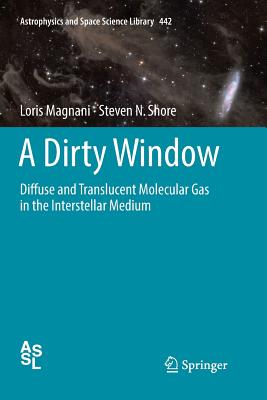Dark Nebulae, Dark Lanes, and Dust Belts
暫譯: 暗星雲、暗帶與塵埃帶
Cooke, Antony
- 出版商: Springer
- 出版日期: 2012-01-28
- 售價: $2,020
- 貴賓價: 9.5 折 $1,919
- 語言: 英文
- 頁數: 243
- 裝訂: Quality Paper - also called trade paper
- ISBN: 1461411858
- ISBN-13: 9781461411857
-
相關分類:
物理學 Physics
海外代購書籍(需單獨結帳)
相關主題
商品描述
Dark Nebulae, Dark Lanes, and Dust Lanes looks out into the deep sky to see "the spaces between the words..."
While not usually considered independently, many of the apparent dark 'voids' in space are among the most compelling telescopic destinations. One well-known example is Barnard's dark nebulae - those striking dark clouds set against (and strikingly obscuring) the background of stars in the Milky Way - but there are countless other less-discussed varieties. Among the brightly illuminated cosmic spectacles that easily come to the astronomer's mind - with few exceptions, such as with the Horsehead Nebula (IC434) - these dark regions are often ignored or commented upon only generally. Because they are only 'seen' via the illuminated matter surrounding them, it is all too easy to overlook the treasure trove they offer the observer, and they frequently comprise much of what is likely to be considered of primary interest in illuminated space objects.
We can find dark 'voids' obscuring all kinds of subjects. Within, or perhaps in front of, globular star clusters, many remarkable and complex dark lanes can be observed with just a little care. These features - the spidery lanes of unlit gases and dust - contribute much of the spectacle and differences from cluster to cluster. Perhaps the same is even more true with bright nebulae, the swirling and complex 'curtain' shapes of illuminated matter, often only appearing to be formed in this manner because of the dark gas and dust within them or in between them and us. Similarly, while the dust belts/bands surrounding most galaxies have been described with a little more detail in practical astronomy sources, observers are often left in 'the dark' [no pun intended] when it comes to anticipating more specifics of what might actually be seen, especially how to make sense of it. Many observers never realize the vast potential that exists for viewing this galactic aspect alone.
While mention of such characteristics is made in a few of the available books, detailed visual references and descriptions for the observer with the kind of detail an observer needs, for a wide range of sights from cluster to cluster, nebula to nebula, or galaxy to galaxy, do not exist: certainly not in a book dedicated just to these types of phenomena. Such illustrations as there are in existing sources usually emphasize the primary lit portions of the object, so that much of the dark regions are lost in the overexposure... and lost to the discussion. While revealing the full dimensions and splendor of the objects, they often obliterate all the delicate inner structures. Typically, there is little discussion of most of these features in any of these resources, even when the effort has been made to provide viewing guidance.
All dark voids may be successfully observed using conventional observing methods, but because dark gases and dust usually present a strong infra-red spectrum they are often better seen with different technologies, including certain light-pollution filters, CCD video cameras and image intensifiers, which feature a response skewed to this portion of the spectrum. Dark Nebulae, Dark Lanes, and Dust Lanes explains the optimal ways to observe each object in detail.
To find a resource for this kind of information in one volume alone is yet to be realized. Uniquely, this new book provides a readily applicable, focused source of practical information from an observer's point of view for a fascinating area of practical observing.
商品描述(中文翻譯)
《暗星雲、暗帶與塵埃帶》深入探索深空,觀察「字詞之間的空隙……」
雖然通常不會單獨考慮,但許多在太空中顯現的暗「空隙」卻是最引人注目的望遠鏡觀測目的地之一。一個著名的例子是巴納德暗星雲(Barnard's dark nebulae)——那些在銀河系背景中顯得格外突出的黑暗雲朵,並且明顯遮蔽了星星的光芒——但還有無數其他不太被討論的類型。在天文學家腦海中容易浮現的明亮宇宙景觀中——除了少數例外,例如馬頭星雲(Horsehead Nebula, IC434)——這些暗區域常常被忽視或僅被一般性地評論。由於它們僅能透過周圍的發光物質「被看見」,因此很容易忽略它們為觀察者提供的寶藏,這些暗區域經常構成了在發光空間物體中最可能被視為主要興趣的部分。
我們可以發現暗「空隙」遮蔽各種主題。在球狀星團內部,或許在其前方,許多引人注目且複雜的暗帶只需稍加留意便可觀察到。這些特徵——如同蜘蛛網般的無光氣體和塵埃的通道——為星團之間的景觀和差異貢獻了許多。或許在明亮的星雲中,這一點更為明顯,發光物質的旋轉和複雜的「幕布」形狀,往往僅因其內部或與我們之間的暗氣體和塵埃而顯得如此。同樣,雖然大多數星系周圍的塵埃帶/帶狀結構在實用天文學資料中有稍微詳細的描述,但觀察者在預測實際可見的具體情況時,常常仍然處於「黑暗」中(無意雙關)。許多觀察者從未意識到僅僅觀察這一銀河特徵所存在的巨大潛力。
雖然在一些現有書籍中提到這些特徵,但對於觀察者所需的詳細視覺參考和描述,涵蓋從星團到星團、星雲到星雲或星系到星系的廣泛景象的資料並不存在:當然不會有一本專門針對這類現象的書籍。現有資料中的插圖通常強調物體的主要發光部分,因此許多暗區域在過度曝光中被遺失……並且被排除在討論之外。雖然揭示了物體的完整尺寸和壯麗,但它們往往抹去所有精緻的內部結構。通常,這些資源中對大多數這些特徵的討論很少,即使已經努力提供觀察指導。
所有暗空隙都可以使用傳統觀測方法成功觀察,但由於暗氣體和塵埃通常呈現強烈的紅外光譜,因此通常更適合使用不同的技術來觀察,包括某些光污染濾鏡、CCD視頻攝影機和影像增強器,這些設備對該光譜部分的反應有所偏向。《暗星雲、暗帶與塵埃帶》詳細解釋了觀察每個物體的最佳方法。
要在一本書中找到這類信息的資源尚未實現。獨特的是,這本新書從觀察者的角度提供了一個易於應用、專注的實用信息來源,涵蓋了一個迷人的實用觀測領域。
作者簡介
Antony Cooke's passion for both astronomy and music was clear from an early age, although it was music that ultimately claimed his career. As solo cellist he has played and recorded worldwide. He was also a professor of music at Northwestern University in Chicago. Presently, he is a prominent Hollywood studio musician, as well as a composer for prime time television. However, it has often been said that science and music go hand in hang. With applied and theoretical astronomy never being far behind, he has pursued it as a serious avocation.
As an observer always looking for ways to improve his experience at the eyepiece, Cooke has constructed many telescopes over the years. Increasing apertures were always the hallmark of his often-quirky designs. Finding that the 18-inch aperture of his present telescope was still insufficient to deliver the kind of performance he had in mind, he experimented with newer technologies to bring these elusive goals ever closer. Successful viewing of dark objects requires great contrast. In this respect, some of the newer equipment has proven to be invaluable, enabling dramatic viewing of many dark objects and features in real time and without the need of CCD imaging.
As an author of astronomy books, Cooke also has written Visual Astronomy in the Suburbs (Springer, 2003), Visual Astronomy under Dark Skies (Springer, 2005), and Make Time for the Stars (Springer, 2009). With Dark Nebulae, Dark Lanes and Dust Belts, his astronomical writings continue.
作者簡介(中文翻譯)
安東尼·庫克(Antony Cooke)對天文學和音樂的熱情從小就顯而易見,儘管最終音樂成為了他的職業。作為獨奏大提琴家,他在全球各地演出和錄音。他還曾擔任芝加哥西北大學的音樂教授。目前,他是一位著名的好萊塢錄音室音樂家,同時也是黃金時段電視的作曲家。然而,人們常說科學和音樂是密不可分的。隨著應用和理論天文學的持續探索,他將其視為一項認真的副業。
作為一名觀察者,庫克總是尋找改善觀測體驗的方法,多年來他製作了許多望遠鏡。他的設計常常以增大的光圈為特徵。發現他目前的望遠鏡18英寸的光圈仍然不足以實現他心中所想的性能,他開始嘗試新技術,以使這些難以捉摸的目標更接近。成功觀測暗天體需要極大的對比度。在這方面,一些新設備被證明是無價的,使得許多暗天體和特徵能夠在實時中進行戲劇性的觀測,而無需使用CCD成像。
作為天文書籍的作者,庫克還撰寫了《郊區的視覺天文學》(Visual Astronomy in the Suburbs,Springer,2003)、《黑暗天空下的視覺天文學》(Visual Astronomy under Dark Skies,Springer,2005)和《為星星留出時間》(Make Time for the Stars,Springer,2009)。隨著《暗星雲、暗道和塵帶》(Dark Nebulae, Dark Lanes and Dust Belts)的出版,他的天文著作仍在持續。



![Astrophotography [Paperback]-cover](https://cf-assets2.tenlong.com.tw/products/images/000/083/229/medium/41OutvXLKSL.jpg?1525643549)








